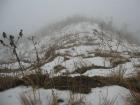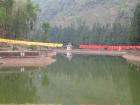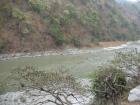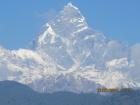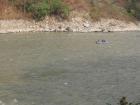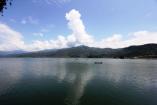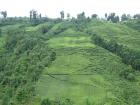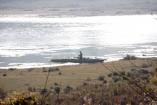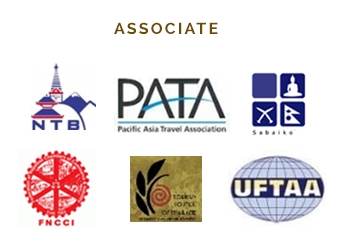DELHI
Delhi, officially the National Capital Territory of India. Delhi is historically and culturally connected to the Yamuna-Ganges river system and the Punjab region. It is bordered by Haryana on three sides and by Uttar Pradesh to the east. It has a population of about 16.3 million, making it the second most populous city and second most populous urban agglomeration in India and 3rd largest urban area in the world. Such is the nature of urban expansion in Delhi that its growth has expanded beyond the NCT to incorporate towns in neighbouring states and at its largest extent can count a population of about 25 million residents as of 2014.
Delhi has been continuously inhabited since the 6th century BC. Through most of its history, Delhi has served as a capital of various kingdoms and empires. It has been captured, ransacked and rebuilt several times, particularly during the medieval period, and modern Delhi is a cluster of a number of cities spread across the metropolitan region.
The NCT and its urban region have been given the special status of National Capital Region (NCR) under the Constitution of India's 69th Amendment Act of 1991. The NCR includes the neighbouring cities of Faridabad, Gurgaon, Noida, Ghaziabad, Neharpar (Greater Faridabad), Greater Noida, Bahadurgarh, Sonepat, Panipat, Karnal, Rohtak, Bhiwani, Rewari, Baghpat,Meerut, Muzaffarnagar,Alwar, Bharatpur and other nearby towns. A union territory, the political administration of the NCT of Delhi today more closely resembles that of a state of India, with its own legislature, high court and an executive council of ministers headed by a Chief Minister. New Delhi is jointly administered by the federal government of India and the local government of Delhi, and is the capital of the NCT of Delhi.
Points of Interest in Delhi
Red Fort: The Red Fort (Lal Qila) is one of Delhi's top tourist sites. A brilliant red sandstone fort built by the Mughal Emperor Shah Jahan (who also built Agra's Taj Mahal) as his ruling palace. Completed in 1648, the years since have not treated the buildings kindly: the rooms have long since been stripped of all objects, the marble inlays are long gone and quite a few buildings are off limits. Still, the scale remains imposing and the gardens are kept lush and
green even in midwinter. Major buildings within include:
Humayun’s Tomb: Humayun's Tomb in south Delhi, near Hazrat Nizamuddin station, is one of Delhi's three UNESCO World Heritage Sites. The tomb is in large, immaculately maintained gardens in the Persian Char Bagh (four corners) style that were thoroughly renovated in 2003 with the Aga Khan's help and are consequently probably the best in Delhi.
Qutub Minar: The most famous structure on grounds, this 72.5 m minaret was the tallest "skyscraper" in the world when built (1193-1368) - it was constructed on the orders of Qutb-ud-din Aybak. Delicately carved, it has been astonishingly well-preserved and is still an awe-inspiring sight today.
Lotus Temple: The lotus temple is a Bahai’s House of Worship completed in 1986. Notable for its flowerlike shape, it serves as the Mother Temple of the Indian subcontinent and has become a prominent attraction in the city.
Akshardham: the Mandir, the Exhibitions and even the Gardens. The Akshardham mandir has over two hundred murtis, representing many of the spiritual stalwarts over many millennia. The spiritual premise of Akshardham is that each soul is potentially divine. Whether we are serving the family, the country our neighbors or all living beings the world over , each service can help one move towards divinity
Gandhi Smriti: This estate is the site of Mahatma Gandhi's martyrdom. Includes a museum celebrating his life and the room he lived in during his final days.
India Gate: There are number of places in India which are regularly attached with the pride and prestige of India. Amongst various, India Gate is one of the most renowned places that are also considered as one of the national monuments that are built in India. The monument is situated at Delhi which is also considered as heart of India and is also the capital city of India.
Jama Masjid: Jama Masjid of Delhi is the largest mosque in India. The Jama Masjid stands across the road in front of the Red Fort. Built between 1644 and 1658, Jama Masjid is one of the last architectural works of the Mughal emperor Shah Jahan. The spacious courtyard of the Jama Masjid holds thousands of faithful.
Jantar Mantar New Delhi: Jantar Mantar of New Delhi was built with a view to help the practicing astronomers in observing the movements of the Sun, Moon and all other planets. The relevance of this science would then be introduced to the general public. There are four distinct instruments within the observatory of Jantar Mantar in New Delhi.
Purana Qila: The Purana Quila or the old fort is one of the most captivating tourist sites that narrate the history of Delhi in details. Constructed by the Mughal emperor – Humayun, the Purana Quila is evidence to the glory of the Mughal art. The Purana Quila is situated in New Delhi and is said to guard the ruins of the city of Indraprastha that is mentioned in the Mahabharata.
Jamali Kamali Mosque & Tomb: Jamali Kamali Mosque & Tomb is located in Archaeological Mehrauli village Delhi. This specific architectural structure comprises of two ancient monuments located alongside, one side the Mosque and the other side the tomb of 2 different people Jamali & Kamali.
National Zoological Park Delhi: Popularly known as ‘Chiriyaghar’ among the Delhi residents, the zoo is spread over an area of 176 acres and houses more than 127 species of animals and birds. As soon as you enter the portals of the National Zoological Park, you encounter animals like Hippopotamus, Chimpanzee, Spider monkey and Zebras. The other section includes migratory birds from across the nation like peafowl, storks and ducks. In the centre of the Zoological Park is the underground reptile house.
Parliament House: The Parliament house is a circular colonnaded building. It also houses ministerial offices, numerous committee rooms and an excellent library as well. Conceived in the Imperial Style, the Parliament House consists of an open verandah with 144 columns. The domed circular central hall with oak paneled walls and the three semi circular buildings are used for the Rajya Shabha and Lok Shabha meetings.
Raj Ghat Associate Memorials: The Raj Ghat in Delhi is a memorial dedicated to the Father of the Nation, Mahatma Gandhi. Originally the name of a ghat of Old Delhi on the banks of the river Yamuna, the memorial lay in close proximity to the 'Raj Ghat' on Yamuna River. With time, the memorial also came to be known as Raj Ghat. The Ghat is essentially a black marble platform that marks the spot of Mahatma Gandhi's cremation
Chandi Chowk: Metro Yellow Line. The heart of Old Delhi, this is the place to go for the full-on Indian experience of crowded, twisting alleys and tiny shops. The Fountain serves as a useful orientation point, and there are great Delhi-style snacks to be found in the vicinity too.
Fatehpur Masjid: Located at the western end of the old street of Chandni Chowk in Delhi, Fatehpuri Masjid was built in 1650 by Mughal emperor Shahjahan’s wife, Fatehpuri Begum. Named after its creator, this red sandstone mosque is a beautiful specimen of the magnificence of Mughal architecture.
Connection/Connectivity
Air
Indira Gandhi International Airport, situated to the southwest of Delhi, is the main gateway for the city's domestic and international civilian air traffic. In 2012-13, the airport was used by more than 35 million passengers, making it one of the busiest airports in South Asia. Bagdogra Airport (IXB) in the Siliguri is the Nearest Airport to travel Delhi.
Road
Delhi has the highest road density of 2103 km/100 sq km in India. Buses are the most popular means of road transport catering to about 60% of Delhi's total demand. Delhi has one of India's largest bus transport systems. Buses are operated by the state-owned Delhi Transport Corporation (DTC), which owns largest fleet of compressed natural gas (CNG)-fueled buses in the world.
Railway
Delhi is a major junction in the Indian railway network and is the headquarters of the Northern Railway. The five main railway stations are New Delhi railway station, Old Delhi, Nizamuddin Railway Station, Anand Vihar Railway Terminal and Sarai Rohilla. The nearest Railway station from Siliguri Town is New Jalpaiguri Railway Station (NJP) is directly connected with all major stations in India.
- Get in touch
Get In Touch
India:
Red Planet Tours & Travels
Elite Plaza (opp. Vishal Cinema)
2nd Mile, Sevoke Road
Siligur - 734001
Phone: +91 9933132575(IND)
Nepal: Kathmandu
Red Planet Tours & Travels
Near Hotel Yak & Yeti Road,
Yak & Yeti Lane
Durbar Marg, Kathmandu, Nepal
Phone: +977 1 5330683/+977 9852662216
Nepal: Kakarbhitta/Kakarvitta
Red Planet Tours & Travels
Main Road, Mechinagar Nagarpalika - 06
Post: Kakarvitta, Jhapa, Nepal
Phone: +977 9842633669











